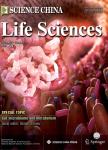A cellular response protein induced during HSV-1 infection inhibits viral replication by interacting with ATF5
A cellular response protein induced during HSV-1 infection inhibits viral replication by interacting with ATF5作者机构:Yunnan Key Laboratory of Vaccine Research & Development on Severe Infectious DiseasesInstitute of Medical BiologyChinese Academy of Medical Sciences & Peking Union Medical College Kunming Medical University
出 版 物:《Science China(Life Sciences)》 (中国科学(生命科学英文版))
年 卷 期:2013年第56卷第12期
页 面:1124-1133页
核心收录:
学科分类:1007[医学-药学(可授医学、理学学位)] 100705[医学-微生物与生化药学] 1001[医学-基础医学(可授医学、理学学位)] 100103[医学-病原生物学] 10[医学]
基 金:supported by the National Basic Research Program of China(2012CB518901) the National Natural Science Foundation of China(31100127)
主 题:herpes simplex virus type 1 (HSV-1) HSV-1 infection response repressive protein (HIRPP) ATF5 transcriptional regulation
摘 要:Studies of herpes simplex virus type 1 (HSV-1) infection have shown that many known and unknown cellular molecules in- volved in viral proliferation are up-regulated following HSV-1 infection. In this study, using two-dimensional polyacrylamide gel electrophoresis, we found that the expression of the HSV-1 infection response repressive protein (HIRRP, GI 16552881) was up-regulated in human L02 cells infected with HSV-1. HIRRP, an unknown protein, was initially localized in the cytoplasm and then translocated into the nucleus of HSV-l-infected cells. Further analysis showed that HIRRP represses HSV-1 proliferation by inhibiting transcription of the viral genome by interacting with the cellular transcription factor, ATFS, via its N-terminal domain. ATF5 represses the transcription of many host genes but can also act as an activator of genes containing a specific motif. We found that ATF5 promotes the proliferation of HSV-1 via a potential mechanism by which ATF5 enhances the transcription of viral genes during the course of an HSV-1 infection; HIRRP then induces feedback repression of this tran- scription by interacting with ATFS.



